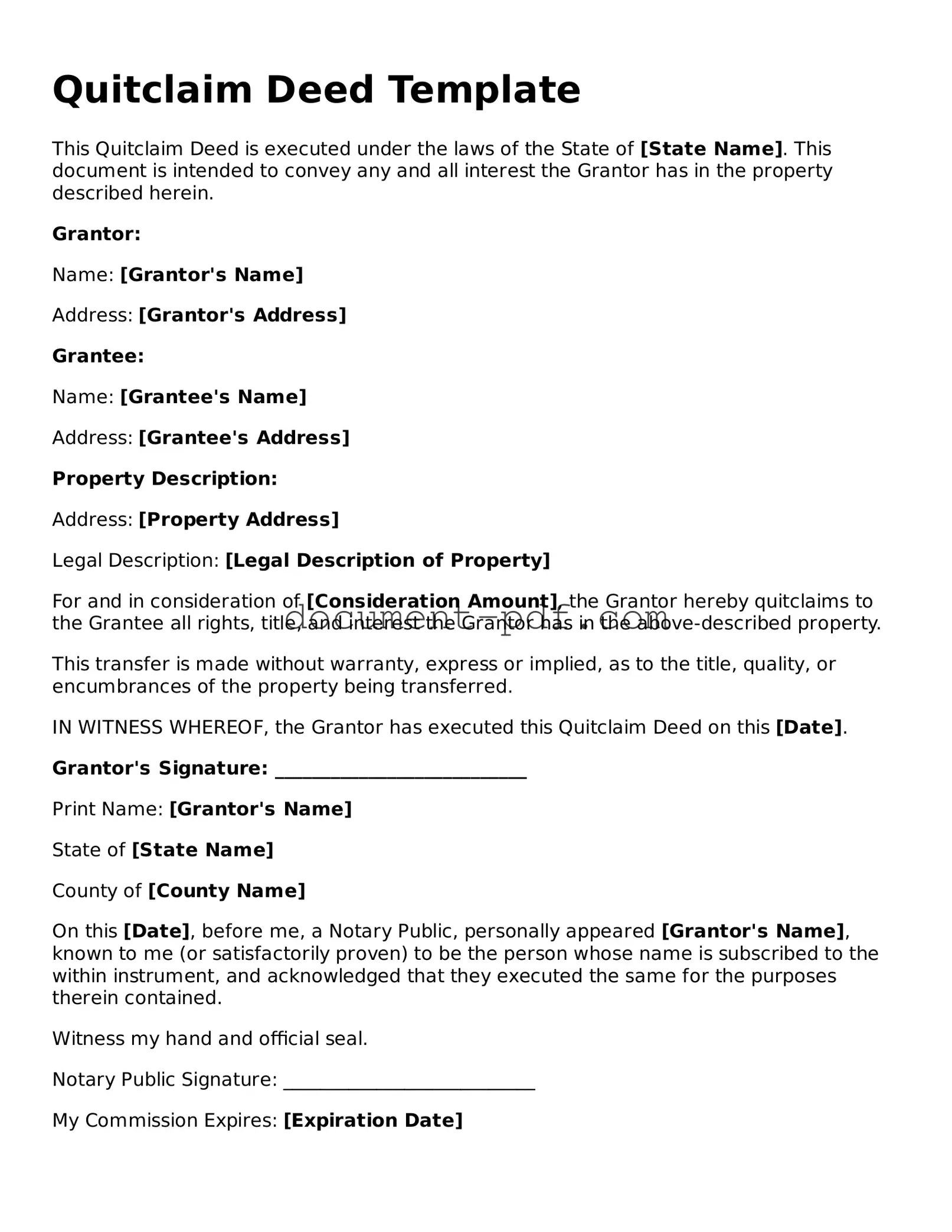Quitclaim Deed Template
This Quitclaim Deed is executed under the laws of the State of [State Name]. This document is intended to convey any and all interest the Grantor has in the property described herein.
Grantor:
Name: [Grantor's Name]
Address: [Grantor's Address]
Grantee:
Name: [Grantee's Name]
Address: [Grantee's Address]
Property Description:
Address: [Property Address]
Legal Description: [Legal Description of Property]
For and in consideration of [Consideration Amount], the Grantor hereby quitclaims to the Grantee all rights, title, and interest the Grantor has in the above-described property.
This transfer is made without warranty, express or implied, as to the title, quality, or encumbrances of the property being transferred.
IN WITNESS WHEREOF, the Grantor has executed this Quitclaim Deed on this [Date].
Grantor's Signature: ___________________________
Print Name: [Grantor's Name]
State of [State Name]
County of [County Name]
On this [Date], before me, a Notary Public, personally appeared [Grantor's Name], known to me (or satisfactorily proven) to be the person whose name is subscribed to the within instrument, and acknowledged that they executed the same for the purposes therein contained.
Witness my hand and official seal.
Notary Public Signature: ___________________________
My Commission Expires: [Expiration Date]
